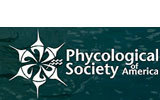Siphononema Geitler, 1925
Holotype species: Siphononema polonicum (Raciborski) Geitler
Publication details: Geitler, 1925: 332
Original publication and holotype designation: Geitler, L. (1925). Über neue oder wenig bekannte interessante Cyanophyceen aus der Gruppe der Chamaesiphonaceae. Archiv für Protistenkunde 51: 321-360, 20 figures, plates 12-13.
Description: Colonial; initial cells solitary, cylindrical to irregularly and narrowly club-shaped, by the basal end attached to the substrate, straight or slightly curved, with colorless and later yellowish pseudovagina, later dividing intensely in the upper part and forming pseudofilamentous to irregular, rich colonies of cells, which are oriented within thallus more or less in rows or (in old parts) irregularly. Thallus micro- to macroscopic. Cells produce their own mucilaginous colorless envelopes, which are in old parts of thallus lamellated and yellowish-brown or orange colored. Cells divide irregularly, usually in three or more planes in successive generations (development of "stigonematoid" thallus), but in apical parts of thallus or in its sides with prevailing crosswise fission (development of rows of cells). Reproduction by solitary cells or groups of cells enveloped by gelatinous envelopes or by solitary motile cells (planocytes), which escape from the splitting envelopes at the marginal and apical parts of thallus (after which remain the cup-shaped rests of sheaths). The resting stages (cells enveloped by firm sheaths) were also described. The type species S. polonicum grows epilithic in the surf zone of cold and clear mountain (alpine) streams and littorals of lakes; till now known from the limestone areas of the European high mountain areas (Alps, highest part of Carpathians, etc.). Second species described from thermal springs in Czechoslovakia (western Carpathians).
Information contributed by: J. Komárek. The most recent alteration to this page was made on 2023-07-25 by E.A. Molinari Novoa.
Taxonomic status: This name is of an entity that is currently accepted taxonomically.
Gender: This genus name is currently treated as neuter.
Most recent taxonomic treatment adopted: Strunecký, O., Ivanova, A.P. & Mareš, J. (2022 '2023'). An updated classification of cyanobacterial orders and families based on phylogenomic and polyphasic analysis (Review). Journal of Phycology 59(1): 12-51.
Verification of Data
Users are responsible for verifying the accuracy of information before use, as noted on the website Content page.
Contributors
Some of the descriptions included in AlgaeBase were originally from the unpublished Encyclopedia of Algal Genera,
organised in the 1990s by Dr Bruce Parker on behalf of the Phycological Society of America (PSA)
and intended to be published in CD format.
These AlgaeBase descriptions are now being continually updated, and each current contributor is identified above.
The PSA and AlgaeBase warmly acknowledge the generosity of all past and present contributors and particularly the work of Dr Parker.
Descriptions of chrysophyte genera were subsequently published in J. Kristiansen & H.R. Preisig (eds.). 2001. Encyclopedia of Chrysophyte Genera. Bibliotheca Phycologica 110: 1-260.
Linking to this page: https://www.algaebase.org/search/genus/detail/?genus_id=44129
Citing AlgaeBase
Cite this record as:
E.A. Molinari Novoa in Guiry, M.D. & Guiry, G.M. 25 July 2023. AlgaeBase. World-wide electronic publication, National University of Ireland, Galway. https://www.algaebase.org; searched on 18 June 2025
 Request PDF
Request PDF














